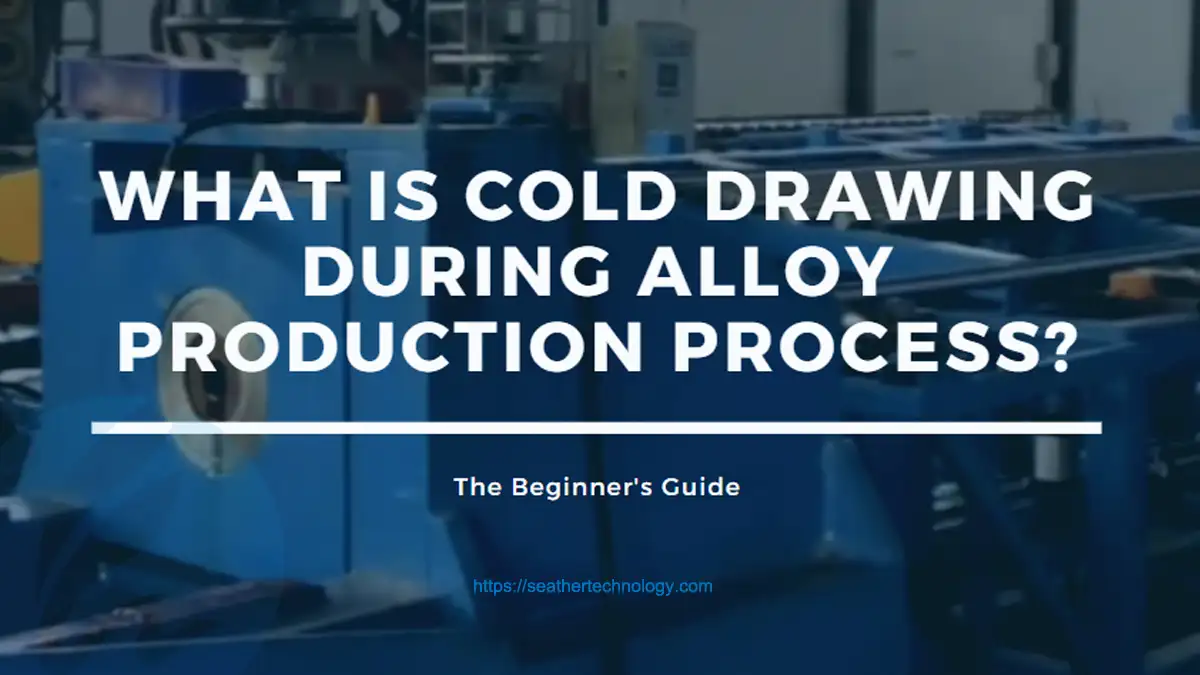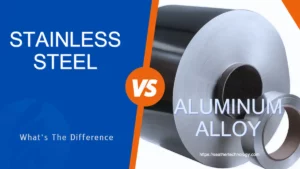Cold drawing is the process in which the alloy material is drawn and passes through the dies at room temperature.
It is a more common process and is mostly used in many industries. According to the shape and size of the die, the cross-sectional area of the material can be changed when the material is pulled out through the extrusion.
Tubes, wires, rods and bars are generally produced by this method.
Temperature is the main difference between cold drawings and hot drawings. As mentioned above, the cold drawing is done at room temperature.
On the other hand, the stretching of the red hot metal is called hot drawing. Generally, metal materials like high-carbon steels, brass, nickel based superalloys, aluminum alloy and stainless steel have excellent drawing properties and are mostly used for cold drawing.
The material must be pulled out more than its yield strength in the cold drawing process. At the same time, it should be kept in mind that this drawing force is not more than its tensile strength to avoid breaking or cracking the material. The cold-drawn process is perfect for long items such as shafting and structural pieces, as well as consumer products requiring a lustrous finish.
Principle of Cold Drawing
Cold drawing is a material processing method.
Cold drawing in alloy materials refers to drawing at room temperature to produce a specific shape and mechanical characteristics.
Cold drawing is a method of producing a thin object, such as the alloy rod or alloy wire.
This is performed by hammering hot rolled alloy fit into the shape of a die; after fitting the material in a specific die, a drawing machine rotates and pushes the metal into its final elongated shape.
Depending on the die, the resultant shape’s cross-section can be round, square, rectangular, hexagonal, or octagonal.
After the cold drawing, the material is stretched longitudinally and subjected to diagonal extrusion at the same time. After one or more cold drawing cycles, the internal lattice slips, the tensile strength increases by 50% to 90%, and the hardness increases while the flexibility decreases dramatically.
It should be noted that steel bars may require multiple passes through the die. If one cycle does not provide the necessary length and width, the steel bars can be sent through the die repeatedly. Each pass also improves the manipulation of the alloy bars by stretching them.
Purpose of Cold Drawing
The main purpose of cold drawing is to get the desired shape and cross-sectional length of metal material in minimum time and cost.
Cold-drawn material offers two key purposes: tight tolerances and enhanced surface condition.
Cold drawing also reduces downstream machining and overall finishing operations.
It also improves straightness and dimension consistency.
This type of production has a significant economic benefit since it produces precise shapes, virtually reducing scrap loss.
Effect of Cold Drawing on Alloys
Size
One of the most important functions of cold drawing is to maintain the proper size of the material which is being cold drawn.
The die compresses and begins to deform the material during cold drawing. After cold drawing via various dies, manufacturers can adjust the size of the material.
It should be mentioned that cold drawing will be difficult to pull if the size of the end product is too small from the stock or the initial size of the material before cold drawing. To overcome this problem, material should be passed through the different-sized dies several times.
During the cold drawing, the cross-sectional area of the material is decreased; at the same, the length of the material will be increased.
Shape
The shape of the final product during the cold drawing process totally depends upon the shape of the die. For example, if the shape of the die is square, then the shape of a cross-section of the material will also be square. It should be noticed that if the material is to be shaped and cold drawn, the size of the material before and after the cold drawing process must be similar.
Surface
The surface finish is also an important effect of cold drawing on the alloy. Impurities on the material’s surface are eliminated as it goes through the die due to frictional forces between the die and the material. This will give the material a polished appearance. After cold drawing, black rods become bright rods. However, we can grind or polish the material after cold drawing for an excellent surface finish.
Mechanical Properties
The mechanical properties of the alloy are additionally impacted by cold drawing. The work hardening is also produced by cold drawing, which is also known as the cold deformation process. With the Heat treatment, we can remove the work hardening produced by the cold drawing method.
Cold Drawing of Different Alloy Products
Cold Drawn Alloys Bars
We can control the size and shape of round bars through the cold drawing. Mostly, forging and hot rolling processes are used to control the shape and size of round bars above 50 mm, and cold drawing is the best option for those below 50mm. The rods’ strength after cold drawing is quite excellent, but their toughness is rather low. Heat treatment is required to soften the cold-drawn material.
Cold Drawn Alloys Pipes
Different types of pipes can be produced by cold drawing, for example, coil tubes, seamless pipes and capillary tubes. Its primary role is to regulate the size of the pipes. The mandrel additionally controls the inner wall of the pipes during the cold drawing process. The mandrel is also part of the die. A cold drawing process can make the material stronger than cold rolling.
Cold Drawn Alloys Wires
Generally, wires are produced by the cold drawing process. The most important feature of cold drawing is controlling the wire diameter.
Cold drawing can change the surface of the wires and help brighten the surface of the wire.
Cold Drawing Vs. Cold Rolling: The Differences
Cold drawing material also produces a rougher surface quality and does not possess superior hardness.
Cold-rolled alloy provides the most uniform and smooth finish with high accuracy and uniformity of wall thickness.
Property | Cold Rolling | Cold Drawing |
Precision | Good | – |
Deformation | Good | – |
Mechanical Properties | – | Good |
Effectiveness | – | Good |
Utilization | Good | – |
Size Range | – | Good |
Surface Smoothness | Good | – |
Uniformity of Wall Thickness | Good | – |
Conclusion
Cold drawing is a wonderful process for producers who want to make exceptionally accurate alloy products.
It is frequently used in square and circular tubes, as well as alloy and stainless steel items. It’s also commonly used to make large pots, pans, numerous cans, and other special shapes.
If you want to get more information about cold-drawn materials (nickel based alloy cold drawn rods, cold drawn pipes and cold drawn wires) for your project. Feel free to contact our team. Our experienced staff will guide you from raw materials to end finished products.






